NASA Mars Science Laboratory + Curiosity Rover: first look (photo gallery)
- Xeni Jardin
- Wide
- Apr 06, 2011
- Apple Aperture, Featured, Joseph Linaschke, JPL, Mars Science Laboratory, MSL, NASA, Photo, RTG, Science, Space, UHF
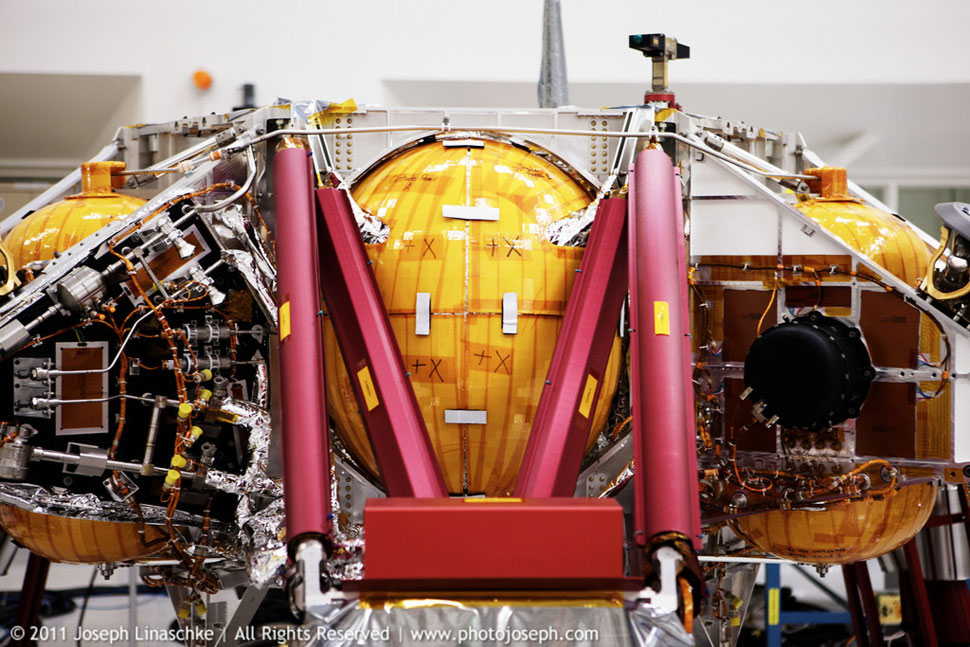

[photo, above: MSL’s descent stage, which files the rover down to Mars’ surface using eight rockets, and lowers it on a tether for landing. The orange spheres are propellant tanks.]
This week, Boing Boing was invited to visit NASA’s Jet Propulsion Laboratory for the first and only opportunity for media to enter the Pasadena, CA clean room where NASA’s next Mars rover, Curiosity, and other components of the Mars Science Laboratory spacecraft have been built for launch in late 2011 from Florida.
Shipment from the clean room to Florida will begin next month. Curiosity rover recently completed tests under simulated space and Mars-surface environmental conditions in another building and is back in the Spacecraft Assembly Facility at NASA’s Jet Propulsion Laboratory for other tests. Spacecraft assembly and testing specialists showed Boing Boing the rover and the other spacecraft components, including the descent stage “sky crane.”
Photographer Joseph Linaschke visited on behalf of Boing Boing (he donned a bunny suit for the occasion) and shot this series of photos. More below.
Captions for Boing Boing by Ashwin Vasavada, a scientist with the NASA JPL MSL program.

[photo, above: MSL’s 4.5-meter aeroshell that encapsulates the rover and descent stage during cruise to Mars and its entry into Mars’ upper atmosphere. The upper cage will hold the parachute.]
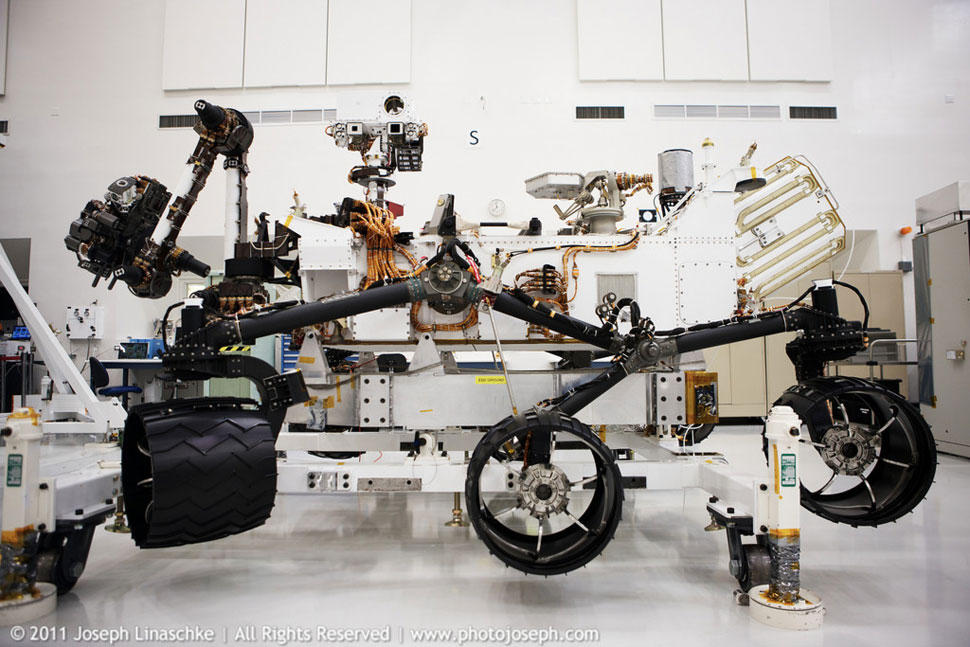
[The
Curiosity rover on a support stand. Each wheel is 50 cm in
diameter. The 2-meter robot arm and instrument turret are
visible on the left.]

[Visitors look into the clean room at JPL that currently holds
nearly all of the MSL flight hardware, including the rover,
descent stage, cruise stage, and aeroshell. These components
were assembled in the clean room and continue to undergo
testing there.]

[Close-up
of the clean room floor showing the descent stage (left),
cruise stage (middle), and aeroshell (right). The technicians
all wear special uniforms (“bunny suits”) to both protect the
spacecraft components from contamination and avoid
electrostatic discharges that would harm spacecraft
electronics.]

[The
Curiosity rover, showing the location of the radioisotope
thermoelectric generator (RTG) on the rear of the rover that
provides both electrical power and heat to enable the rover’s
operation and survival on Mars. Pipes visible along the sides
of the RTG use fluid to transport heat into the rover
body.]

[
Detail of the rover’s suspension system (foreground) and
high-gain antenna (right).]

[Curiosity’s deck, showing the mast (left), high-gain antenna
(right), and UHF antenna (gray unit in the far left). At the
top of the mast is a telescope used to focus a laser on rocks
and soils up to 20 feet away for chemical analysis. Just below
the telescope, the medium-angle and telephoto lenses of the
rover’s primary science cameras are visible as two squares of
different sizes. On the outsides of those are the rover’s four
navigation cameras. Only two are used at any time, with the
other two serving as spares.]
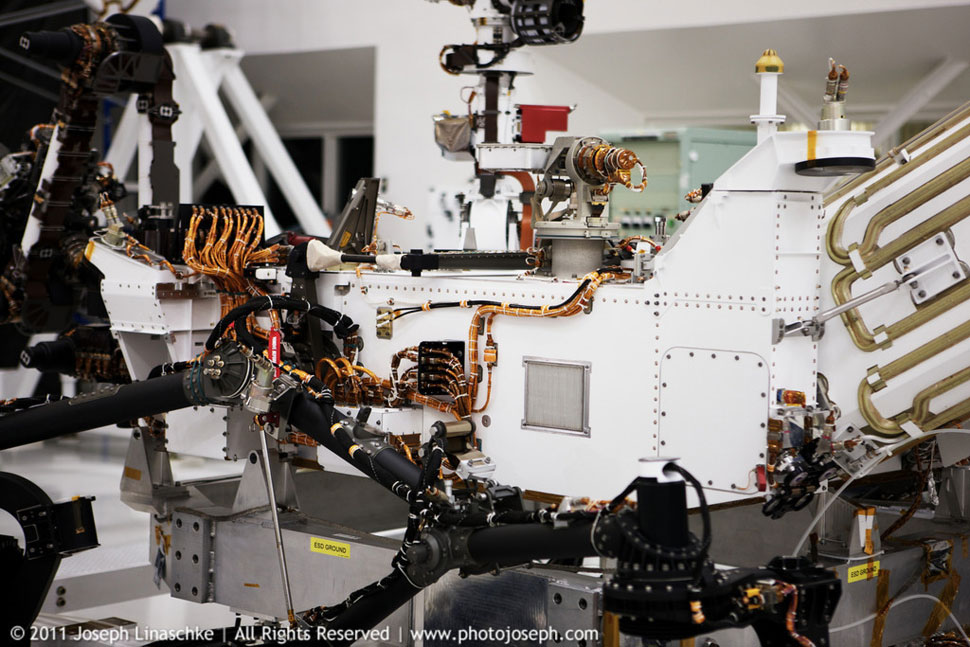
[Detail of the rover’s suspension system and high-gain antenna
(center-right, on the deck).]
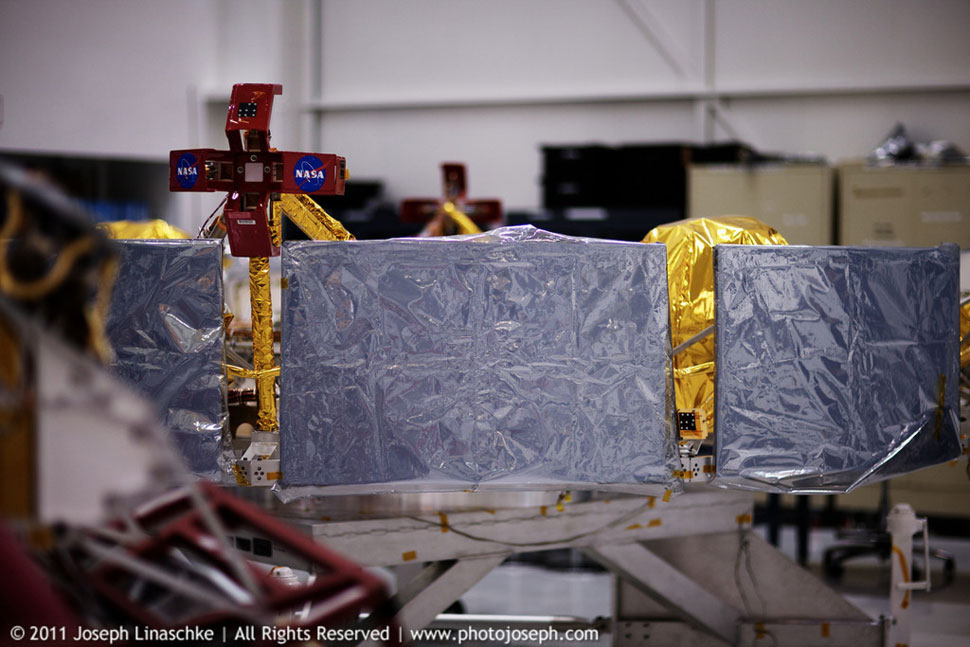
[The
MSL cruise stage. The cruise stage provides solar power,
thrusters for navigation, and heat exchangers to the rover
during its flight from Earth to Mars. The side-facing heat
exchange panels have a protective covering in this image.]
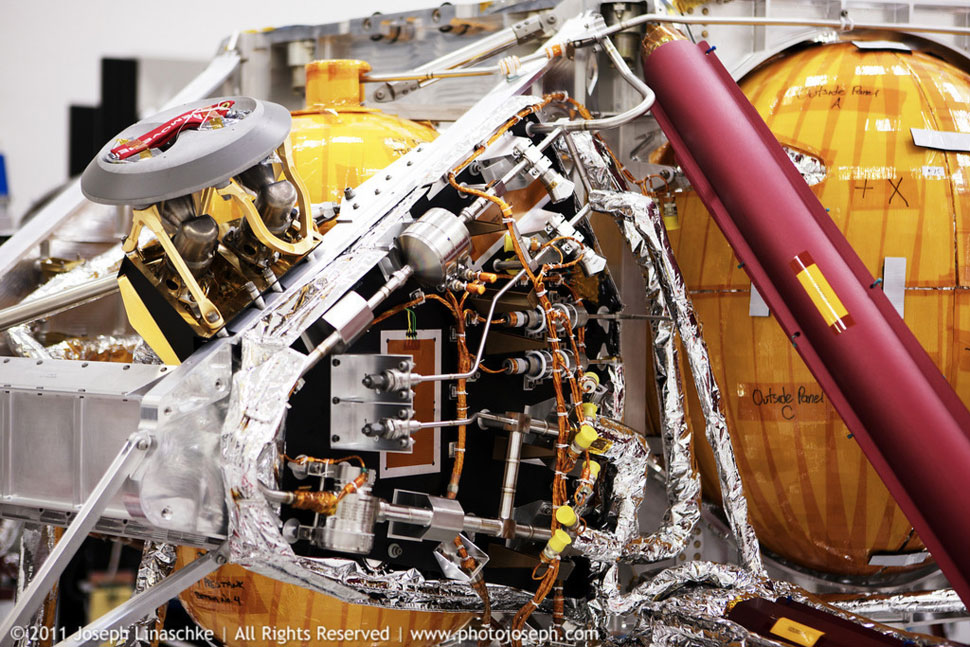
[Detail of the MSL descent stage. The gray disk in the upper
left contains small rocket thrusters that will help steer the
spacecraft during its entry into Mars’ atmosphere. The orange
spheres are propellant tanks.]
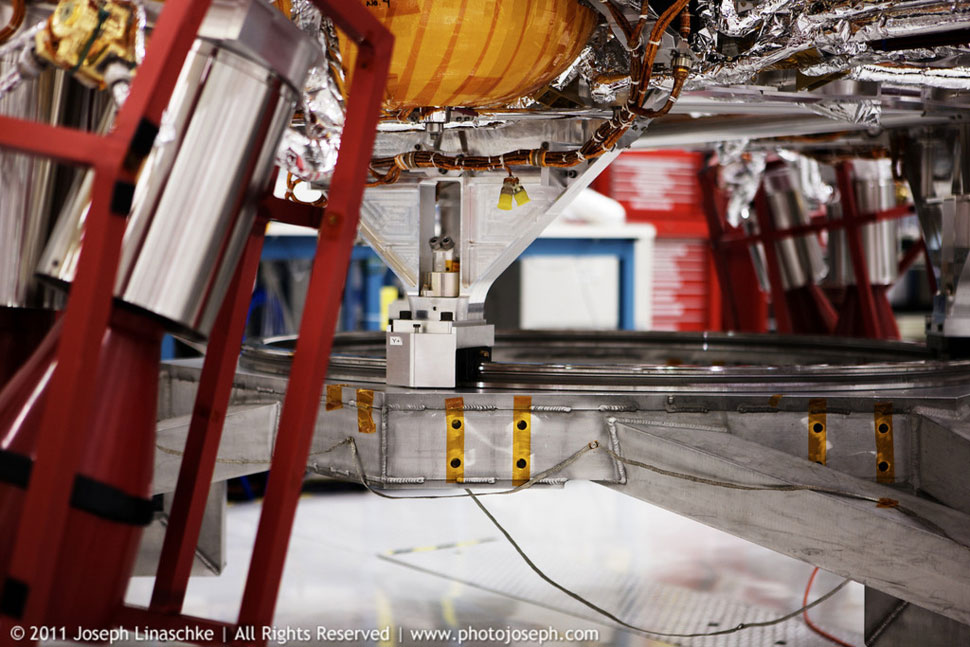
[Underside
of the MSL descent stage. One of the eight rocket nozzles is
visible on the left, enclosed in a protective
cage.]
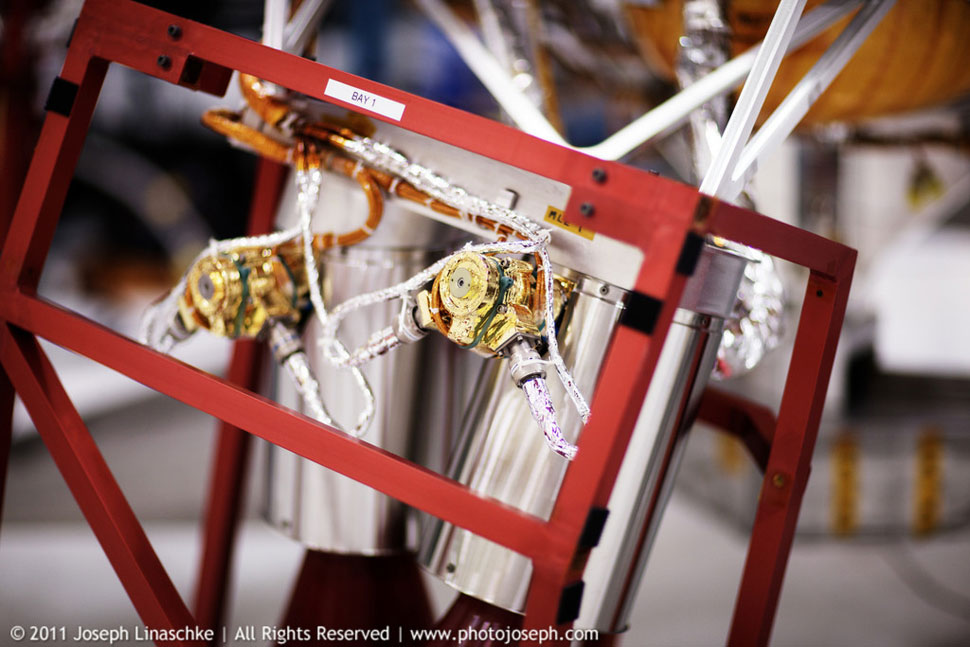
[Close-up of two of the rocket nozzles on the descent stage.
The gold-colored parts are the rocket throttle
valves.]
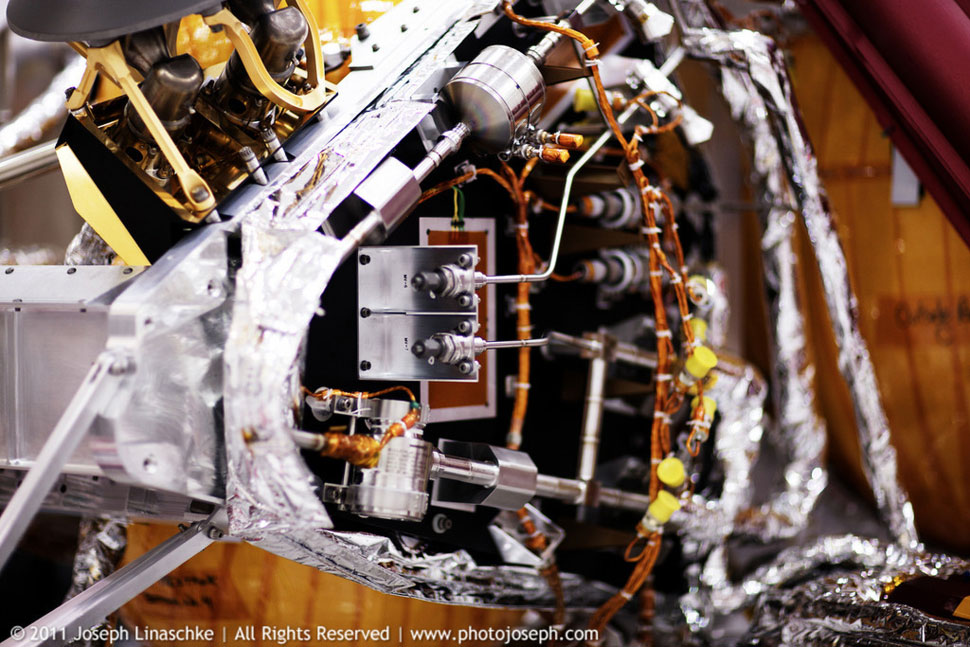
[Detail of propellant lines on the MSL
descent stage.]
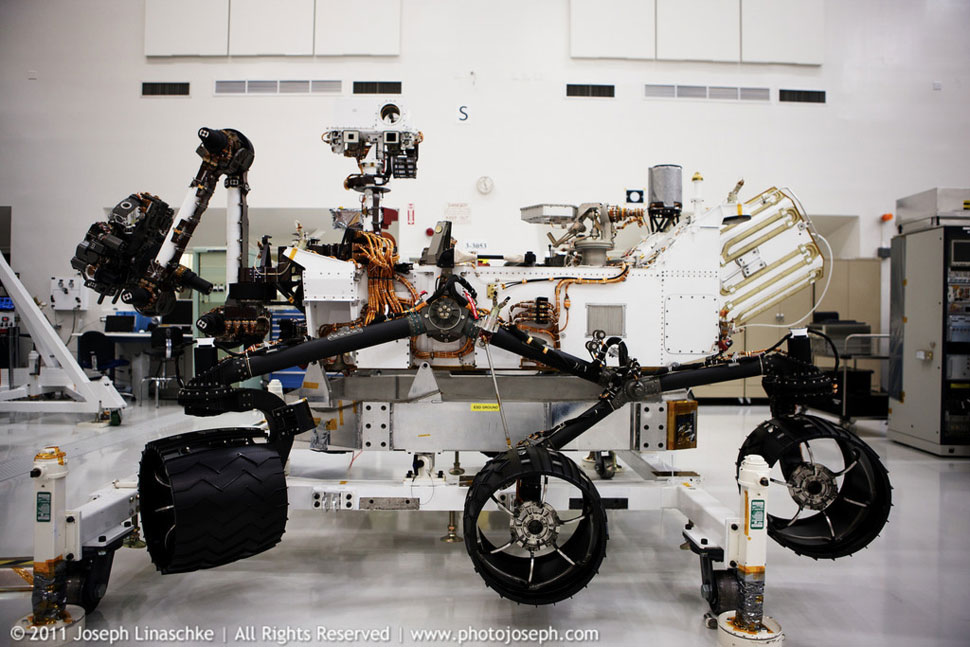
[ The
Curiosity rover on a support stand. Each wheel is 50 cm in
diameter. The 2-meter robot arm and instrument turret are
visible on the left.]
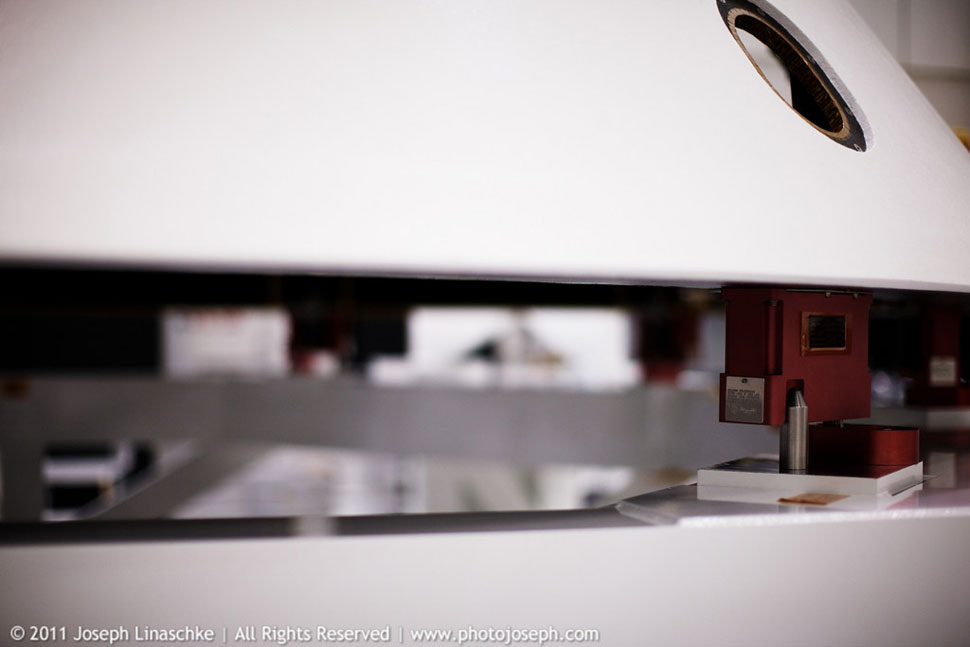
[
Detail of the MSL aeroshell on its support stand.]
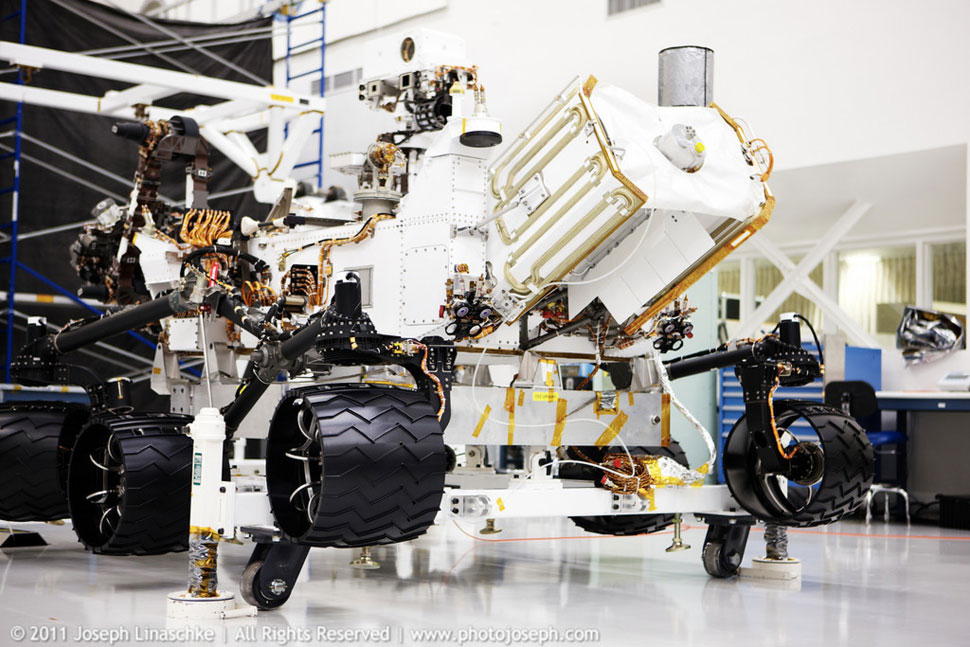
[Rear
of the Curiosity rover showing the radioisotope thermoelectric
generator that supplies electrical power and heat to the
rover.]

[Close-up of the MSL descent stage
showing four of the eight rockets (in protective cages) that
will fly the rover down to the surface of Mars.]
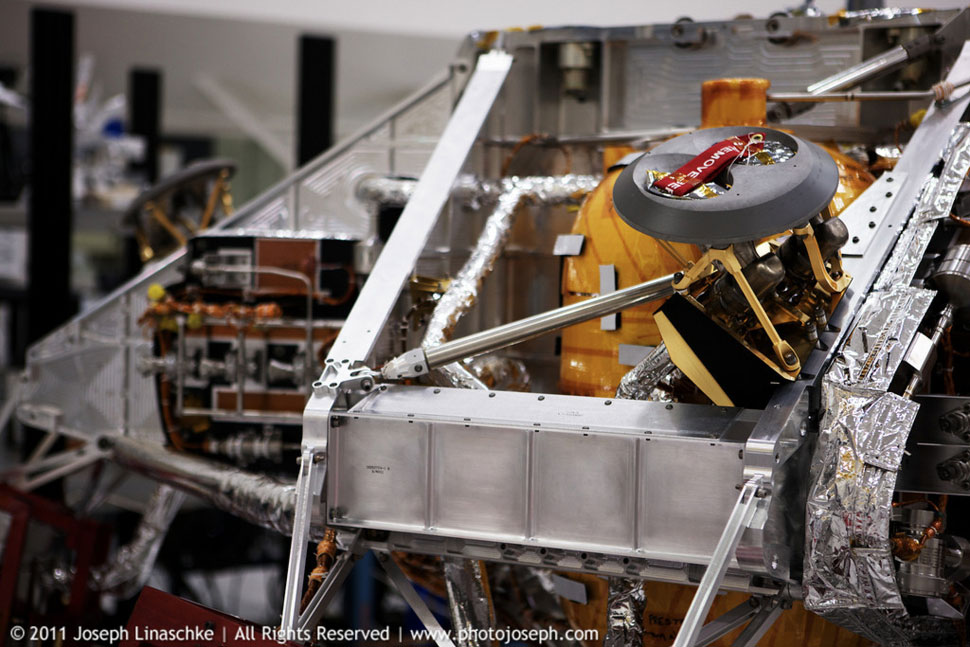
[Close-up of the MSL descent stage showing two small thrusters
(inside the gray disk) that will help steer the spacecraft
during its entry into Mars’
atmosphere.]

[Curiosity’s wheels. Each wheel is made
from black-anodized aluminum and is 50 cm in diameter.
Curiosity’s wheels and suspension system are designed to take
the impact of landing and to allow the rover to traverse sandy
and rocky terrain.]

[Close-up of MSL’s descent stage. The
orange spheres are propellant tanks. The black-colored unit
measures accelerations with high precision in order to control
the descent.]
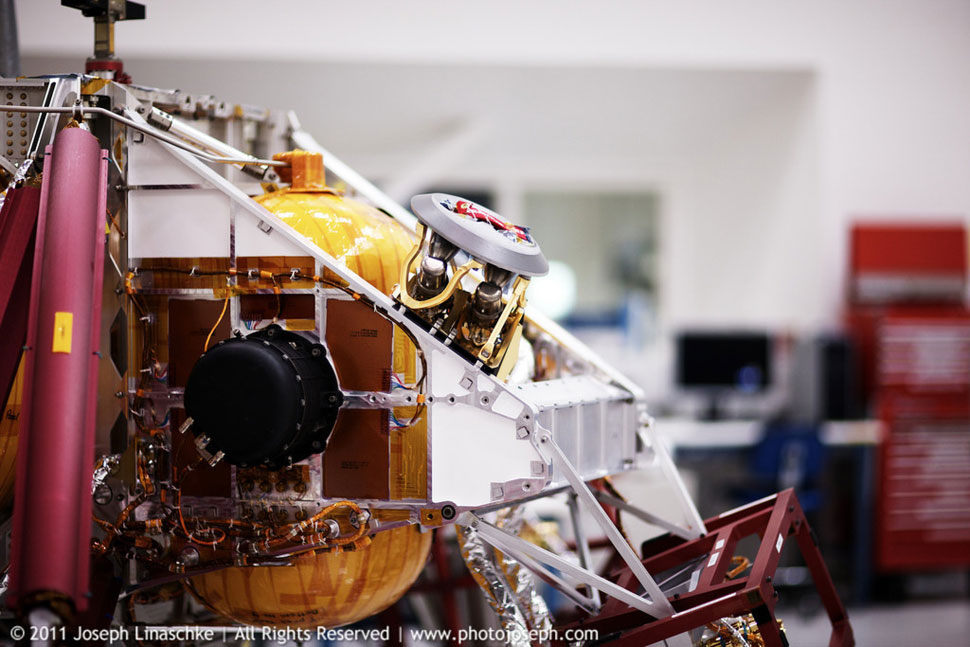
[Detail of the MSL descent stage showing
a propellant tank (orange), acceleration measurement unit
(black), and steering thrusters (gray).]
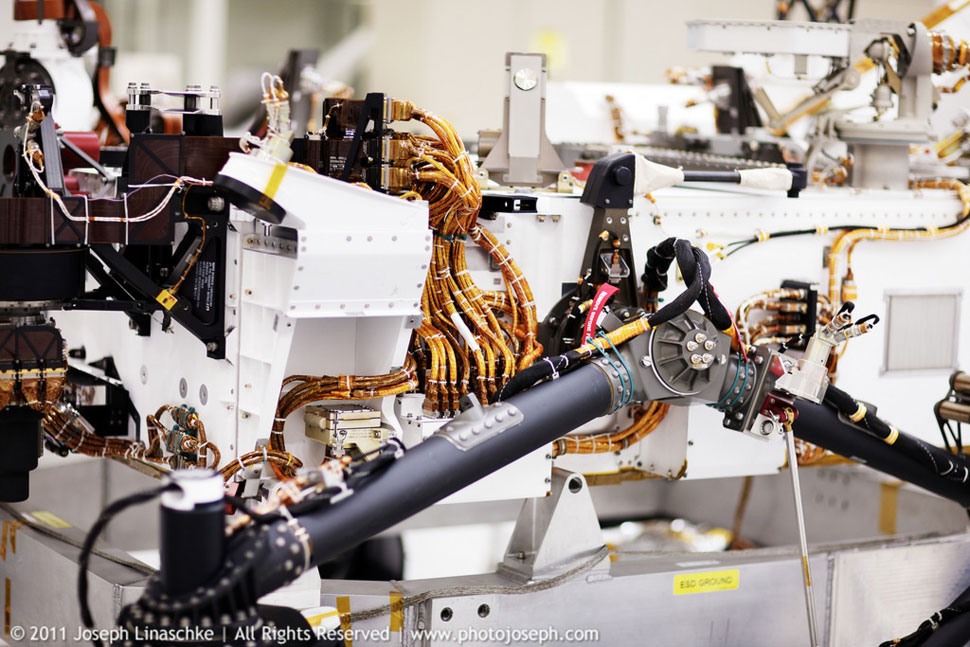
[Detail of the side of the Curiosity rover showing its
suspension and electronics cabling.]

[Close-up of one of the rover’s six wheels. The spokes help
contain the impact of landing and driving over rough
terrain.]

[Detail of
the rover’s suspension system and high-gain antenna
(center-right, on the deck).]
About the photographer:
Joseph
Linaschke is a photographic storyteller and educator,
and runs ApertureExpert.com,
a leading site for Apple Aperture users. He has traveled the
world representing various technologies and companies on stage,
including MetaCreations, Wacom, Corel, and Apple, where he was
part of the marketing team for Aperture and produced and shot
several productions for iLife, Aperture and Final Cut
Studio.
You can purchase prints of any images in
Joseph’s JPL
Mars Curiosity Rover photo gallery
here.